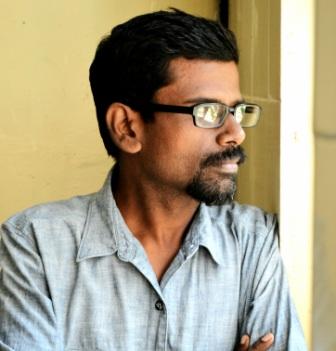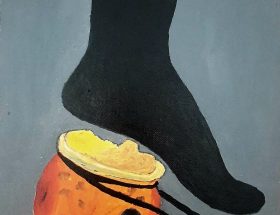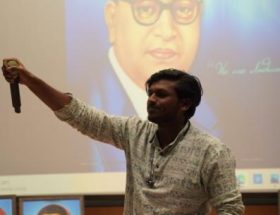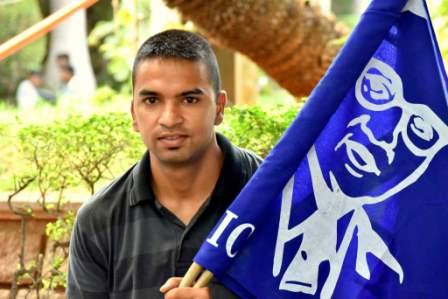B. Prabakaran
 Why does Sarpatta hold an important place in Tamil film history? It not only has convincing arguments for Dalits and women but also raises questions against dominant images and ideas.
Why does Sarpatta hold an important place in Tamil film history? It not only has convincing arguments for Dalits and women but also raises questions against dominant images and ideas.
A Tamil film, Unnal Mudiyum Thambi (‘you can do it brother’), released 33 years ago was directed by a prominent dialogue writer-cum-director K. Balachander, who has directed nearly a hundred films in his career. The female protagonist of the story comes from a village Dalit background, the daughter of a people’s advocate. However, the film described her in the course of a dialogue as a ‘Harijan’ from the Gandhian perspective. The hero of the film belongs to saiva vellala pillai – ‘an upper caste’ individual in the graded hierarchy, who falls in love with this courageous Dalit girl.
In their second meeting in the movie, the hero wants to know her name curiously, as usual. She answers as L.K Malam, after a little conversation; ‘malam’ literally means human excreta in Tamil. In this introductory scene of the character, the director wants to disclose her position in the caste structure to the audience. The characteristic expression refers to an age old humiliation inflicted on her deliberately in the name of romance. Narrating the story in this way is a sophisticated idea from the Brahmin director’s point of view.
Non-dalits write Dalit stories with nebulous concepts speaking of the pain smoothly, not linking it with reality. There were movies with Brahmin, Gounder, Devar, Vanniya and Vellala heroes, but not Dalits. From ‘above to below’ has been the way of dealing with reality in Tamil cinema; where each caste has its politics and plays a role reflecting its pseudo pride, and also each caste portrays Dalits constantly as falsehearted, idle, cruel, lustful and victims.
‘Son of filthy caste’ ‘dog’ ‘son of chandala’ ‘son of illegitimate relations’ are regular phrases that have been used for Dalits in the caste centric subjects. One of the songs which speak of caste ‘honour’ goes like this ‘Take the soil from the feet of our Jajman or Master and put it on your forehead’. Here Dalits are expected to be devotees of the demi god – Jajman, and the God like master should be held higher, holier and richer than the labourers. The caste oriented subjects were ambiguous and instructive to ‘others’ in placing Dalits at their respective corners, by doing so they failed to understand the historical roots and cultural background of Dalits.
At this juncture, it is appropriate to revisit what the film Sarpatta entails. The film released three weeks ago is about Madras boxing clans, and was well received by the writers, audiences and the critics. It is directed by Pa. Ranjit, an anti-caste activist as labelled by Aljazeera news media some months ago. It has done justice in portraying Dalits within the emancipatory framework as his other films do. Dalit film does not mean showing Ambedkar’s statue or eating beef or cleaning drainages. The higher priority must be given to questioning power, critical of the state apparatuses, presenting rational legacy, stubbornness of women, importance of education, labour rights and relations, ethical roots of the oppressed, association of subaltern literature, Buddha and blue colour and above all the presence of Dr. Ambedkar.
The film gives extraordinary importance to these aspects. On the one hand, Ambedkar’s photographs appear in different places, on the other hand it is clearly visible they’re of equal length as the faces of the ‘social criminals’ in most of the courtroom trial scenes. While the majority of Indian film directors have been completely silent about Ambedkar in showing his image or in any form symbolically, Sarpatta shows him explicitly with these words pronounced on the screen: ‘find your chance, nobody can help you’.
The best way to surmount the hidden history is to pull the truth out, as has been evidently portrayed in this film. ‘Use every means to prove yourselves’ ‘bounce back’ ‘this is your game’ ‘don’t wait for the chance’ ‘you are the light and you are the way’ ‘don’t be passive’ ‘we should create our own path’: these strong dialogues of the film are appropriate in the present politico-cultural scenario of Dalits and none of these were ever heard on the Tamil silver screen earlier.
The protagonist of the story is Kabilan – one of the Buddha’s names, intentionally given to present the movie’s outlook by the director. The antagonist is Raman, also intentionally named. Ambedkar has affirmed critically in his writings that ‘The history of India is a history of mortal conflict between Buddhism and Brahmanism’–in the film, this truth reverberates in the sport of boxing. Raman might have been a ‘perfect image’ of Brahmanism or the ‘saviour’ for Gandhi but from the Buddhist point of view, he is evidently weaker than Kabilan or Buddha and is defeated by Buddha historically. Raman, in this film, is weak, a backstabber, a crooked and failed man. This is an inevitable aspect in the eyes of Ambedkar and moreover Pa. Ranjit seized every opportunity to register insinuations from Dalit history through a name or number or colour. Thus, nobody plays an overimportant character in this story, all the characters have a purpose to deliver a message to us.
Film is the medium of engaging with social issues in this day and age. Through its dialogues Sarpatta challenges the way Dalits were portrayed in earlier films and answers the questions raised by the dominant castes or the dominant ideas. The language spoken in this film has a strategic sequence that is highly noticeable. The director consciously omitted the name of the former chief minister M. Karunanithi the names of other Dravidian leaders but strongly registered the association of Dalits with Dravidian ideology in the seventies. At the same time, the protagonist, a Dalit worker, might have started his career as a DMK supporter but ended with the Blue banner of Ambedkar’s Republican party of India and got sensational victory in his battle.
The climax, symbolically, befits the political life of Ambedkar. The master of the protagonist says to the student (and also to the audiences) that ‘with great difficulty I have brought this caravan where it is seen today, if you are not able to take the caravan ahead do not allow the caravan to go back’. This was however a political statement coming out of the lips of the character was originally vehemently delivered by Dr. Ambedkar. So the film echoes the past and the future of the Dalits. It would be a big step in disseminating an authentic account of Dalits without caste pride or misogynic statements or misrepresentation of minorities in the milieu of Indian cinema. The film aggrandizes Dalit politics in the visual medium and takes the viewer to the inner world of their wounded psyche.
~~~
B. Prabakaran is an independent Ambedkarite researcher, who penned four books on Dr.B.R.Ambedkar; he recently published an interview of Dr.Ambedkar in Tamil, and is currently working on Ambedkar and his newspapers.










